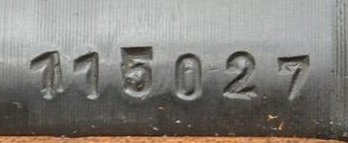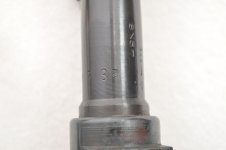pzjgr
EOD - bombs and bullets
Definitely an interesting rifle...and a cool addition to a collection regardless of the ultimate history...
I was wondering if it had been refinished at some point, the 1936 marking looks a little washed out like it was buffed and polished, so maybe that lends some creedance to the thought that the receiver was either a rejected military receiver, or pulled from the military receiver line....then assembled as a commercial, and finished to commercial specs?
I was wondering if it had been refinished at some point, the 1936 marking looks a little washed out like it was buffed and polished, so maybe that lends some creedance to the thought that the receiver was either a rejected military receiver, or pulled from the military receiver line....then assembled as a commercial, and finished to commercial specs?









